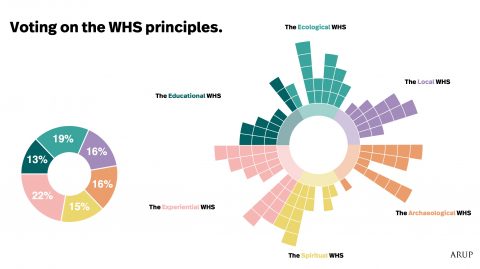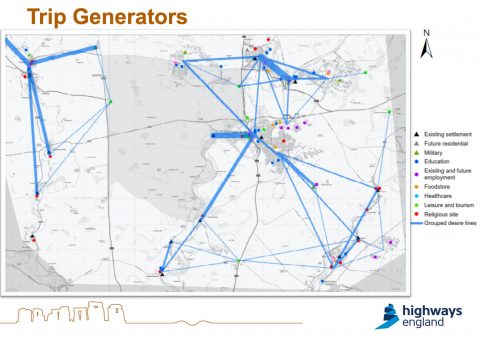Although many of the developments associated with Highways England’s plans for the A303 reach the Press, there is an awful lot of work going on in the background that never gets reported, yet has short, medium and long term impacts and potential benefits for Winterbourne Stoke. In some cases, the impact of these activities will exist whether or not the A303 scheme even goes ahead. They all require input from the Parish Council, over and above the “normal” round of activities in which we routinely engage, which for a small group of volunteers can be quite difficult.
As Christmas is nearly here, we thought we should give you an opportunity to get away from presents, yet more food and drink, the pretty much inevitable family argument and see what some of this stuff is all about and give you the opportunity to stretch your grey matter by considering how some of these activities might have a direct impact on you as individuals.
To set the scene a little more. Highways England has provided funding for a number of studies to be conducted on things associated with the A303 and the proposed roadworks, but peripheral to it. Some of these studies will be commissioned directly by Highways England, others in a way that is one step removed. Here, you have the opportunity to see the progress on two of them”
Exploring the World Heritage Site and Beyond

Arup has been commissioned to develop a Sustainable Landscape Access, Transport and Tourism strategy for the World Heritage Site (WHS) and beyond, described through a vision, principles and action plan. This project is reliant on the engagement of the people and organisations that will continue to live, care and shape the WHS for generations to come, so community input is essential. The following file gives a snapshot of a workshop conducted at Devizes Town Hall in November 2019 and it s output. This can be found here:
https://winterbournestokepc.org.uk/wp-content/uploads/2019/12/Visioning-Principles-Write-Up.pdf
It was a fairly complicated process that began by looking at best-practice world-wide in managing similar high profile sites. It then went on by taking the WHS vision and developing a series of principles on which delegates could vote. Attendees were split into several group representing different interests (The Parish Council elected to take part in the “Local” group) and each delegate ultimately had 12 votes to cast for any of the principles created by their own or any of the other groups.

A number of principles emerged from this and these can be summarised as follows. Please bear in mind that the WHS comprises both the Stonehenge area and the Avebury area and some of these principles apply more to one than the other. :
Landscape Access
• Spread access North and South
• Spread visitors e.g. directing to all spiritual attractions in Avebury
• WHS visitor gateways – to engage visitors in and raise awareness
• Better promotion of the monuments and museum resources
• Promotion of Pagan principles and history
• Promoting local businesses
• Landowners and managers buy-in
• Better communication and public relations between all (farmers, locals
• Consult locals first
• Free access for all (locals)
• Peak spreading to preserve the WHS within environmental capacity
• Seasonal no public access for naturally sensitive/delicate
• Joining up those who will own the legacy
• No public (tourist) access)
• Well maintained and signed rights of way
• Better promotion of walking and cycling in the landscape
• Only sustainable visitor transport within WHS
• Better connectivity between sustainable modes
• Better access to the WHS (and over it) for cyclists and horse from local communities
• Connectivity to the national trails connected by the rights of way over the WHS.
Transport
• Services linking the two WHS
• Horse transport from parking to and around the WHS
• Bicycle hire linkage (Boris Bike Scheme)
• Consult other tourist destinations, cathedrals, Stonehenge bus, etc.
• Stop parking on bridleways and byways
• Vehicles appropriate for the nature of the road
• Zero emissions integrated local/tourist transport
• Route planning for coaches to avoid negative impact on local / wider community
• Consult locals first
• Consult wider about the effects of activities occurring in WHS
• Drive less, see more
• Educate on the benefit of the shift for all, not just heritage
• Walk, cycle, hike to reach the site
• Linkage to national bridleways and footpaths
• Improve public transport options
• Greater convenience with public transport over private
• Promote alternative modes of transport or access
• Better public transport options
• Reduce appeal of car parking in WHS
• Creating more parking outside of the WHS
Tourism
• ‘One destination’ visitor experience
• Give visitors an understanding of the range/variety of experiences available
• Provide different experiences for different types of visitors
• A more spiritual experience
• Spiritual tour rather than archaeological
• Visitors gain an understanding of the place
• A deeper experience, stay longer, make return visits
• Engagement with national tourism providers
• Consult locals first
• Young people, schools, hands-on interactions
• Deliver benefit to local community
• Integrated attractions benefitting communities e.g. tourist brochure
• Reimbursement of parking charges for visitors to local amenities
• Lower the impact of visitors, e.g. seasonal closure
• Conserve by educating and training
• Discourage fleeting visits
• Encourage self-directed tourism
The ideas generated by the workshop were subsequently used at the Highways England Community Forum and further nuanced responses gleaned.
Arup will now take these and other inputs to develop an Action Plan for the World Heritage Site. This will include a monitoring scheme, which is one of the biggest shortfalls in the current WHS Management Plan that Winterbourne Stoke Parish Council has been fighting for several years.
Connected Communities

The second study is the Connected Communities project, being undertaken by consultants WSP on behalf of Highways England. It is examining existing sustainable transport links between communities on the edge of the Stonehenge World Heritage Site. This includes facilities for walking, cycling, horse riding, and bus provision and identifying where gaps exist in current provision to enable residents to commute, shop or access essential services.
This was tabled at the Community Forum meeting and gave local Parish Councils and other local groups to sanity check the work that had been done to date.
See here for an outline of the work that was presented:
The meeting was asked to consider:
Do your experiences agree with our findings?
Are we considering the correct corridors? Are there any specific improvements to the facilities you would suggest?
• pedestrians
• cyclists
• equestrians
• bus users
The study team was given a lot of food for thought and there was considerable concern about some fairly obvious omissions from the study. For instance:
• the western edge of the study area did not include Yarnbury Castle, a key north-south crossing of the A303 that links to local byways
• lack of consideration of east-west transport needs across the WHS (eg by those who live in Shrewton and work at Dstl or Qinteiq)
• the impact of the new doctor’s surgery in Larkhill and its impact on east-west local transport needs
• the recreational needs of locals.
We will report these studies again when complete, or if there is an opportunity for involvement by the broader community.
We would be happy to give further insights into either of these two studies if there is sufficient community interest.
